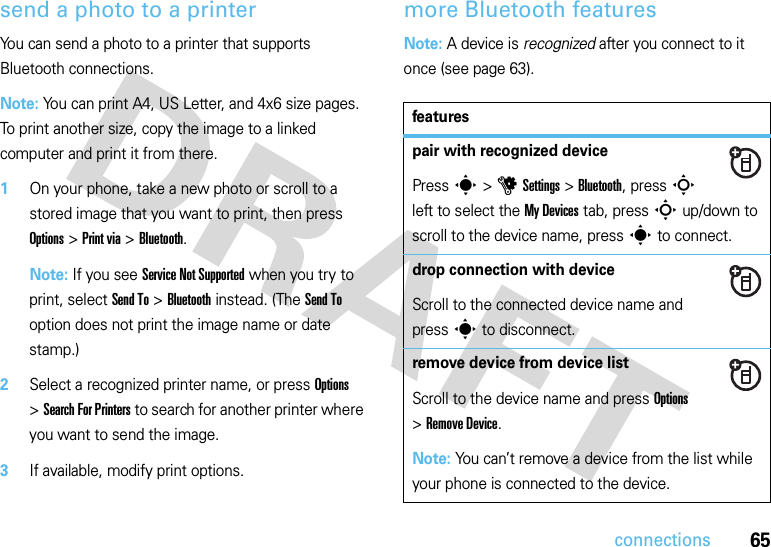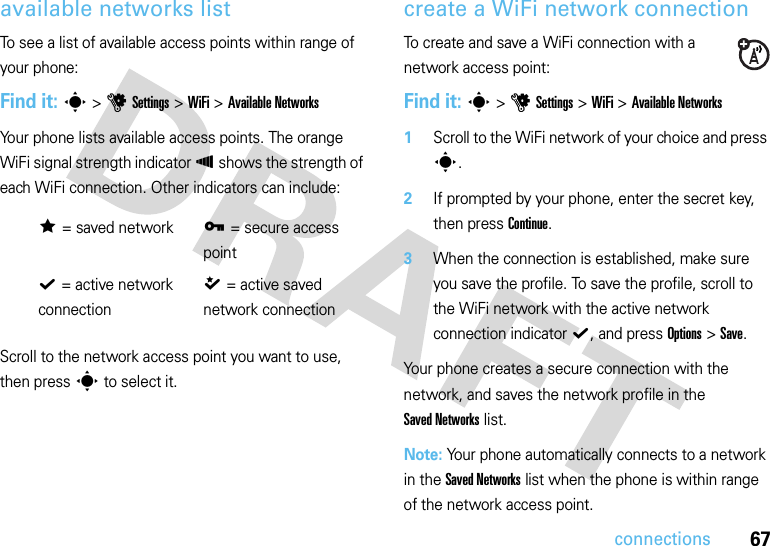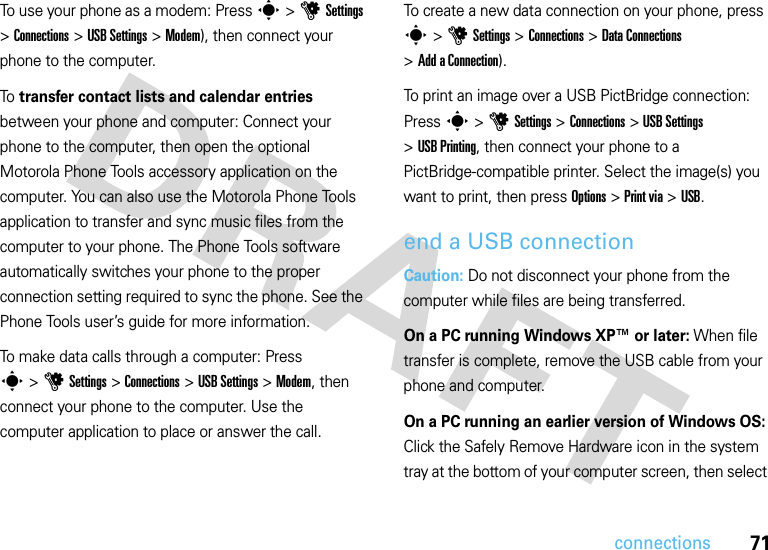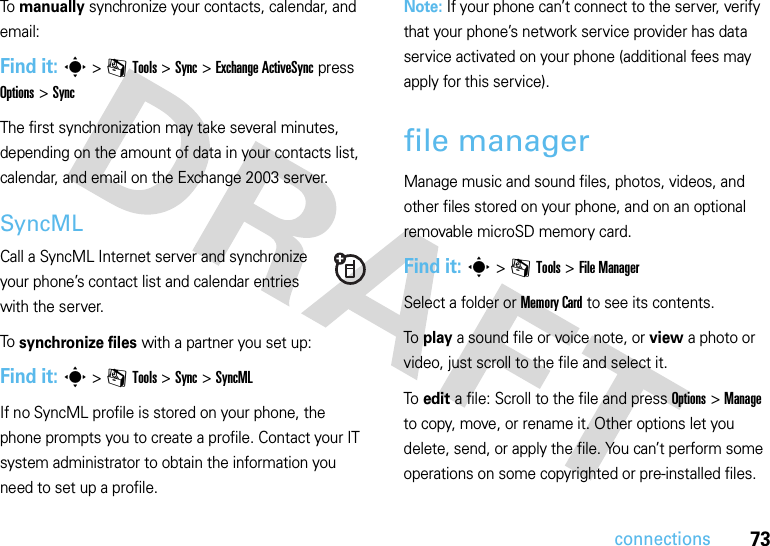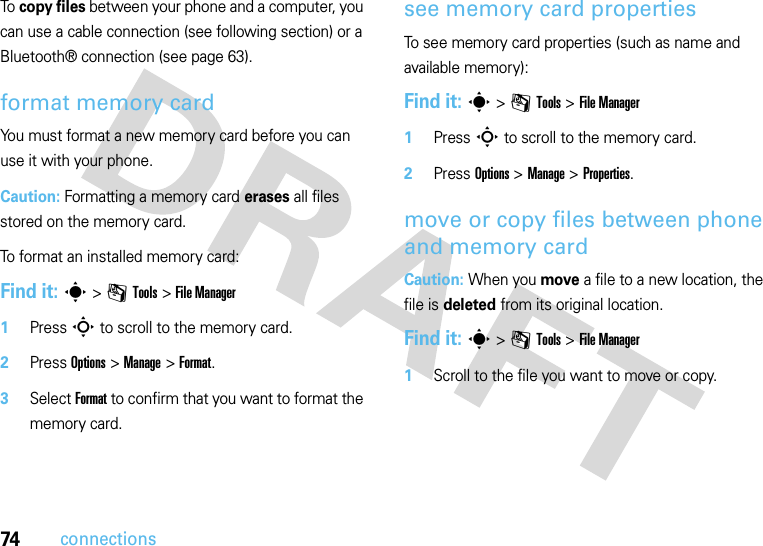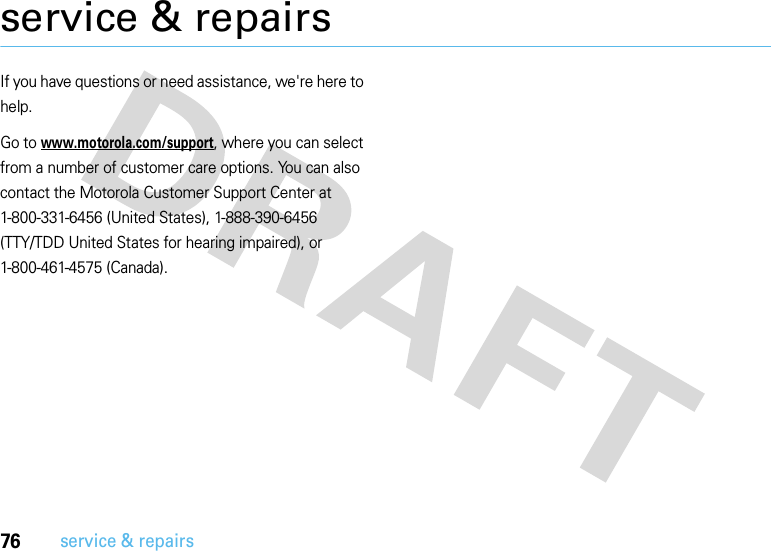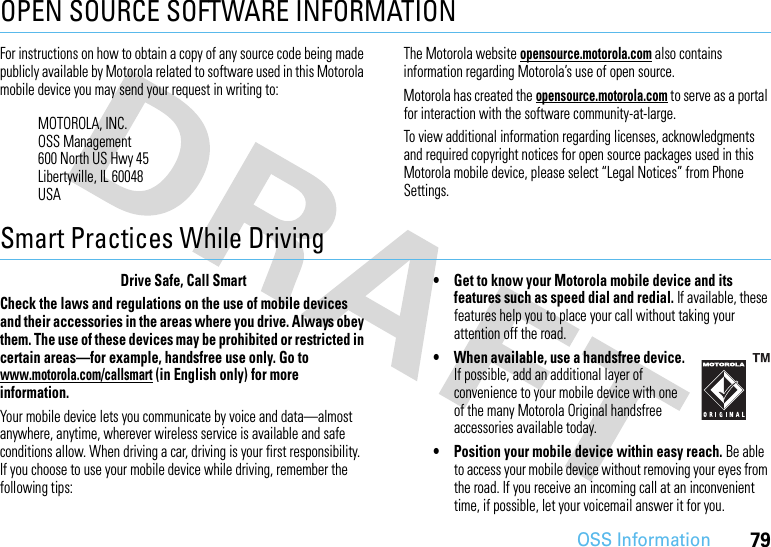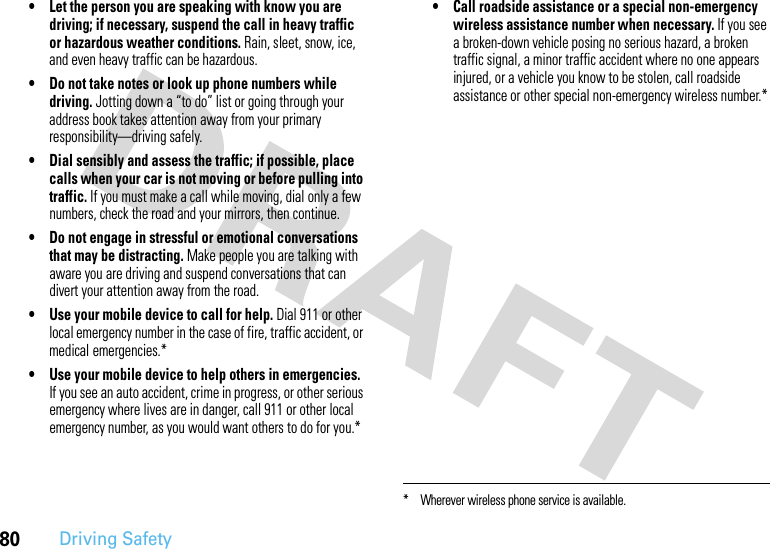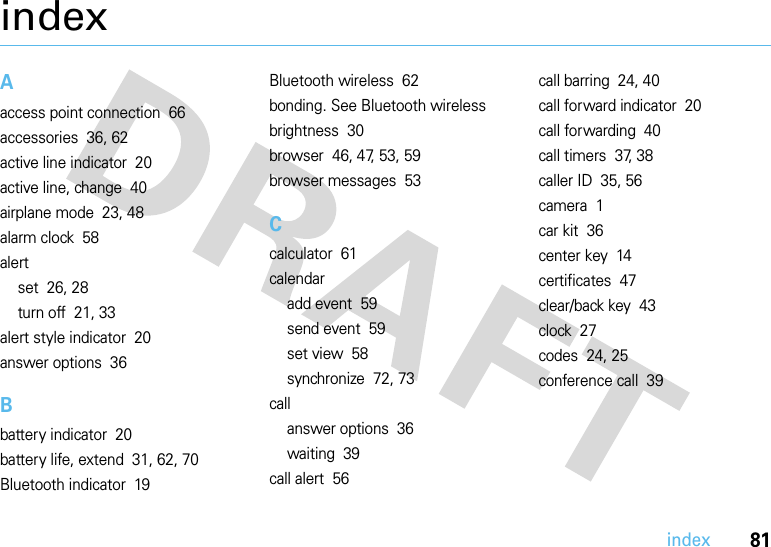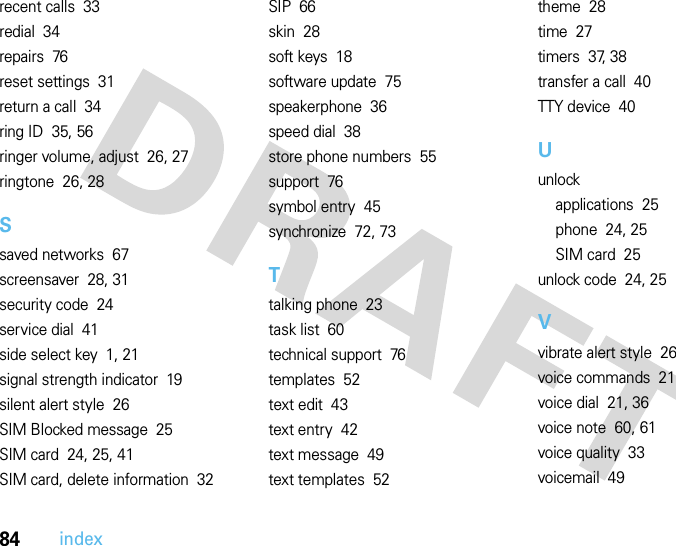Motorola Mobility P56JK1 Portable Cellular/ PCS GSM/ EDGE Transceiver with WLAN and Bluetooth User Manual Exhibit 8 Users Manual
Motorola Mobility LLC Portable Cellular/ PCS GSM/ EDGE Transceiver with WLAN and Bluetooth Exhibit 8 Users Manual
Exhibit 8 Users Manual


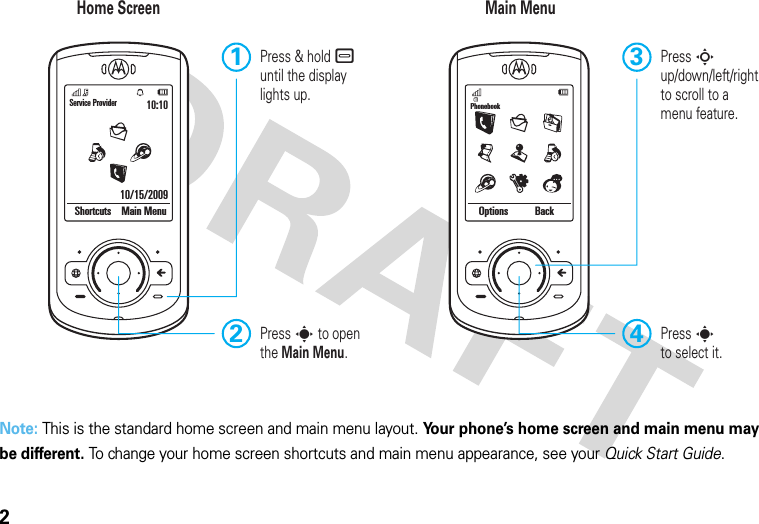

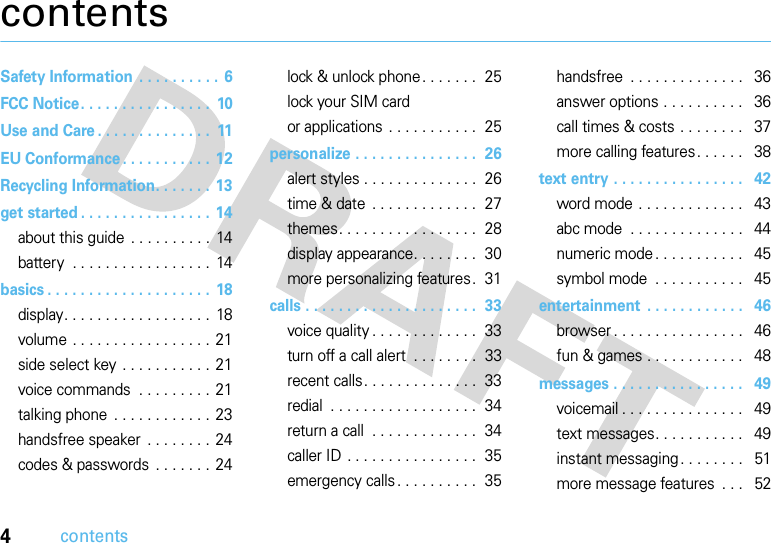


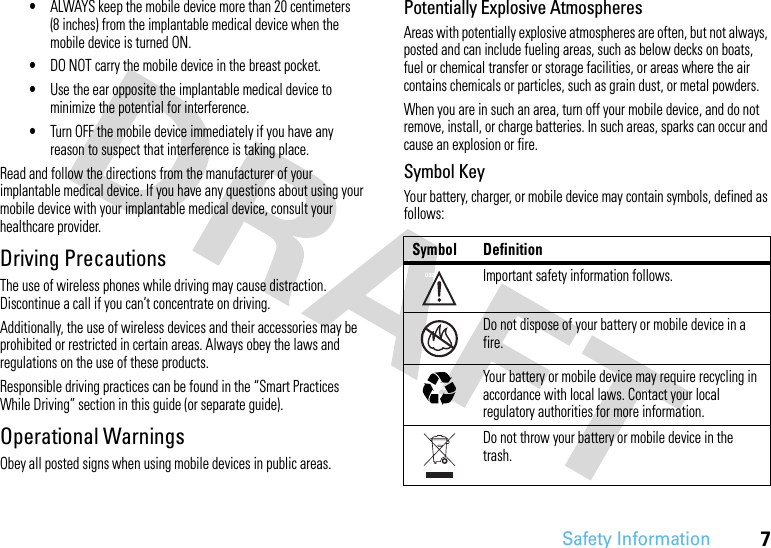
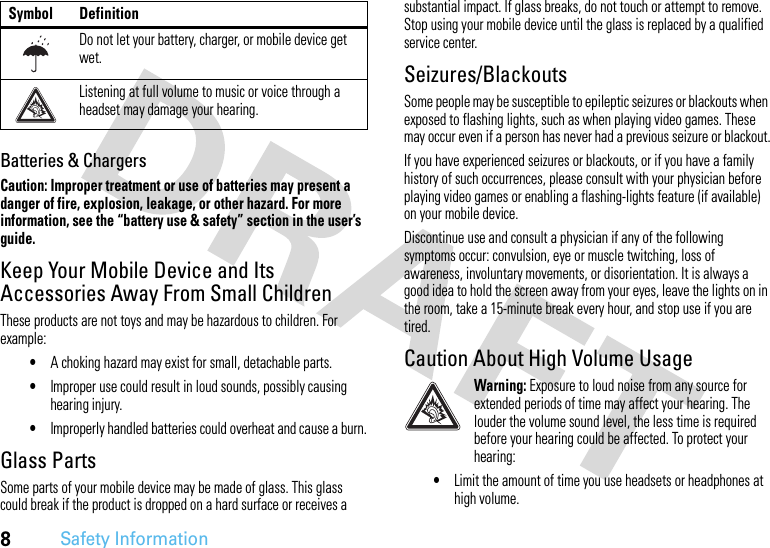
![9Safety Information•Avoid turning up the volume to block out noisy surroundings.•Turn the volume down if you can’t hear people speaking near you.If you experience hearing discomfort, including the sensation of pressure or fullness in your ears, ringing in your ears, or muffled speech, you should stop listening to the device through your headset or headphones and have your hearing checked.For more information about hearing, see our Web site at www.motorola.com/hearingsafety (in English only).Repetitive MotionWhen you repetitively perform actions such as pressing keys or entering finger-written characters, you may experience occasional discomfort in your hands, arms, shoulders, neck, or other parts of your body. If you continue to have discomfort during or after such use, stop use and see a physician.[Mar0108]](https://usermanual.wiki/Motorola-Mobility/P56JK1/User-Guide-1013442-Page-11.png)


![12EU ConformanceEuropean Union Directives Conformance StatementEU Conformanc eHereby, Motorola declares that this product is in compliance with:•The essential requirements and other relevant provisions of Directive 1999/5/EC•All other relevant EU DirectivesThe above gives an example of a typical Product Approval Number.You can view your product’s Declaration of Conformity (DoC) to Directive 1999/5/EC (to R&TTE Directive) at www.motorola.com/rtte. To find your DoC, enter the Product Approval Number from your product’s label in the “Search” bar on the Web site.[France Only]0168 Product Approval Number](https://usermanual.wiki/Motorola-Mobility/P56JK1/User-Guide-1013442-Page-14.png)

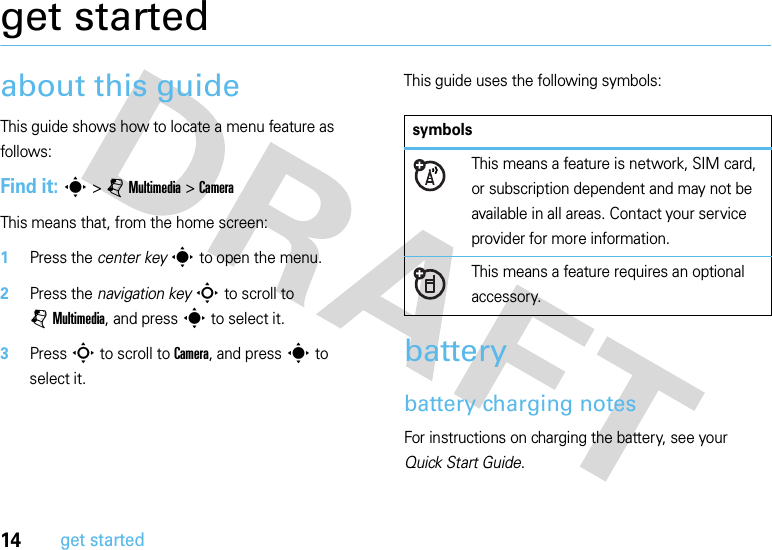

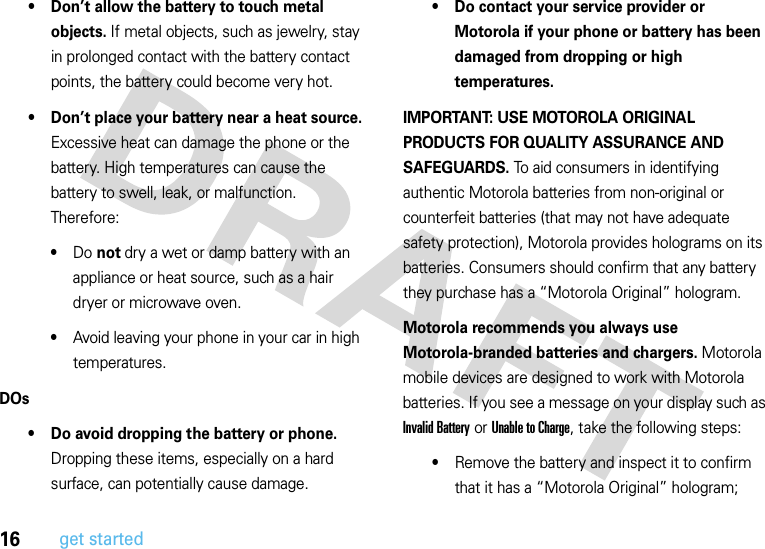
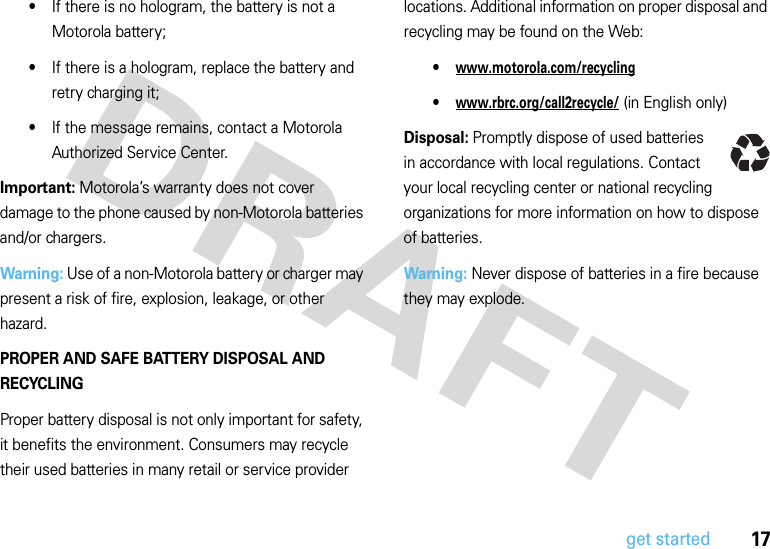


![20basics5IM Indicator – Shows when you receive a new IM message.6Message Indicator – Shows when you receive a new text or voice message. Other indicators can include:7Location Indicator – Shows P when your phone is providing location information to the network, or Q when location information is turned off.8Alert Style Indicator – Shows the alert style setting:9Active Line Indicator – Shows B to indicate an active call, or E to indicate when call forwarding is on. Indicators for dual-line-enabled SIM cards can include:10 Battery Level Indicator – Vertical bars show the battery charge level. Recharge the battery when your phone shows Low Battery.]= text message(= voicemail messageV= email messageN= ring loudN= ring softK= ring and vibrateI= vibrate then ringH= vibrate onlyJ= silentG= line 1 activeF= line 2 activeD= line 1 call forward onC= line 2 call forward on](https://usermanual.wiki/Motorola-Mobility/P56JK1/User-Guide-1013442-Page-22.png)
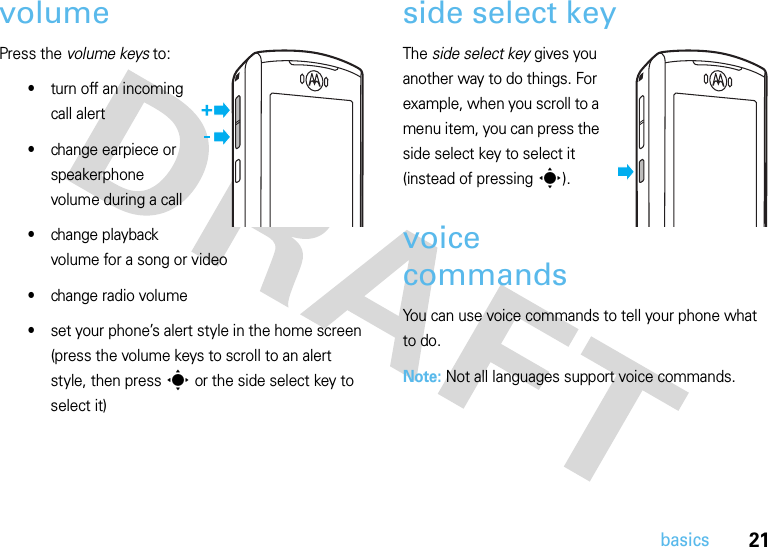
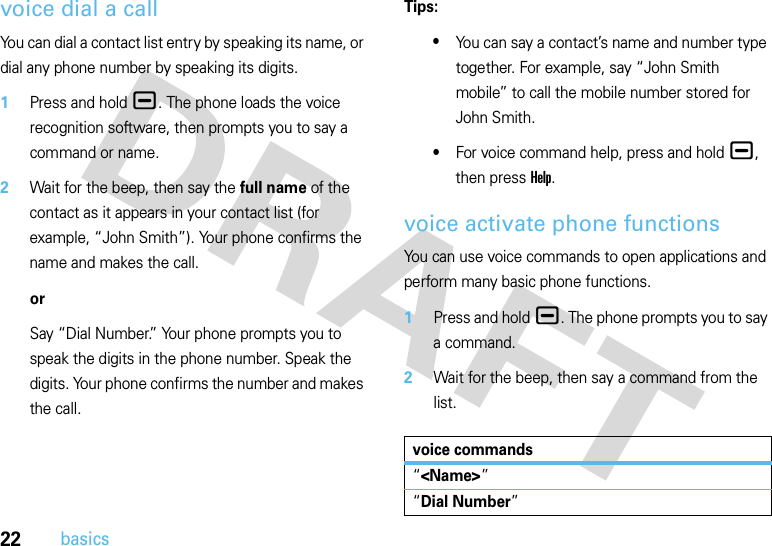
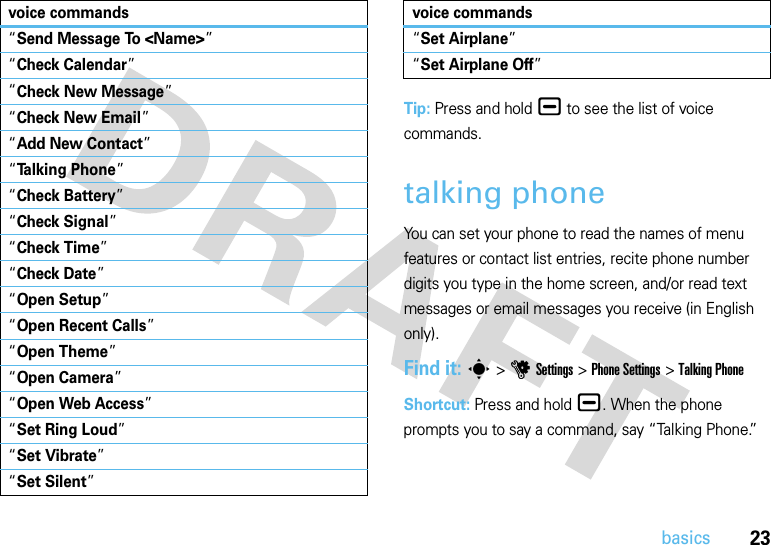
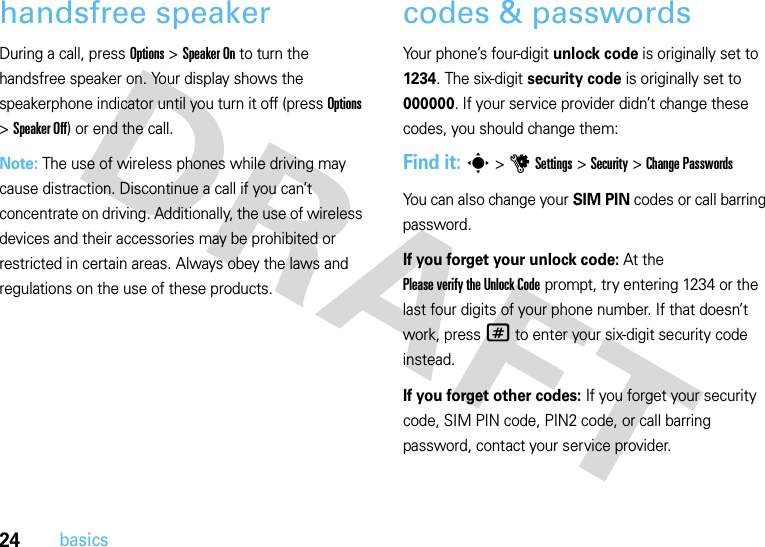
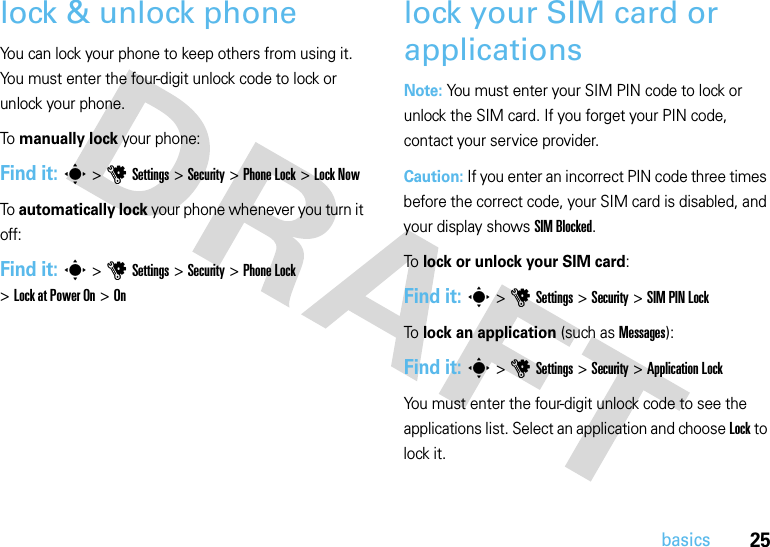




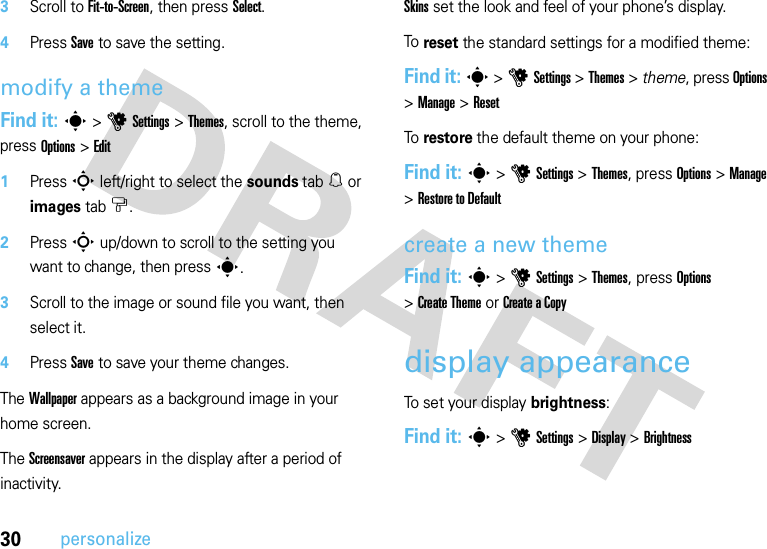

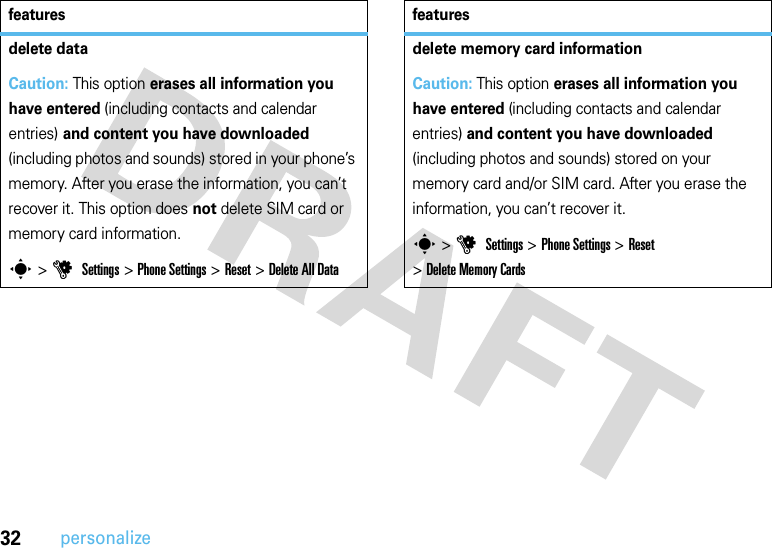


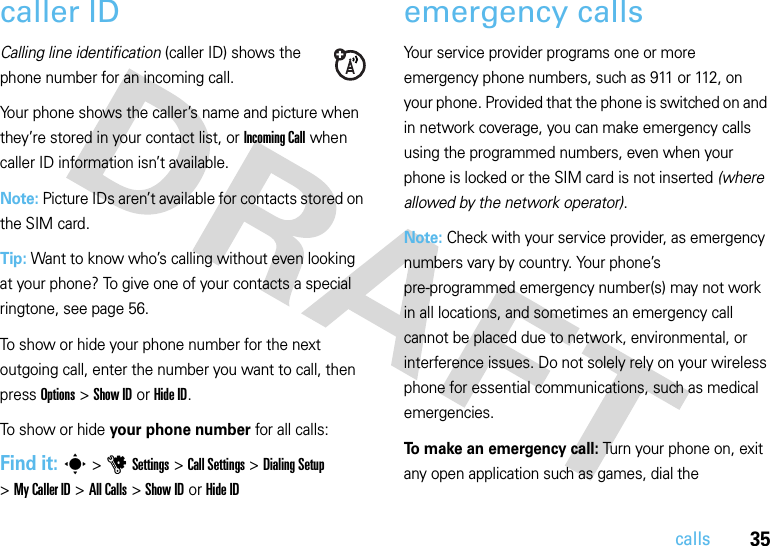
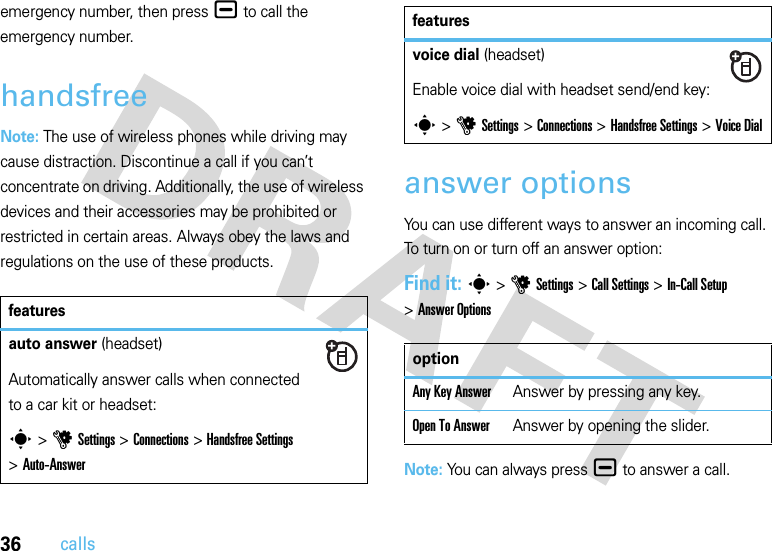


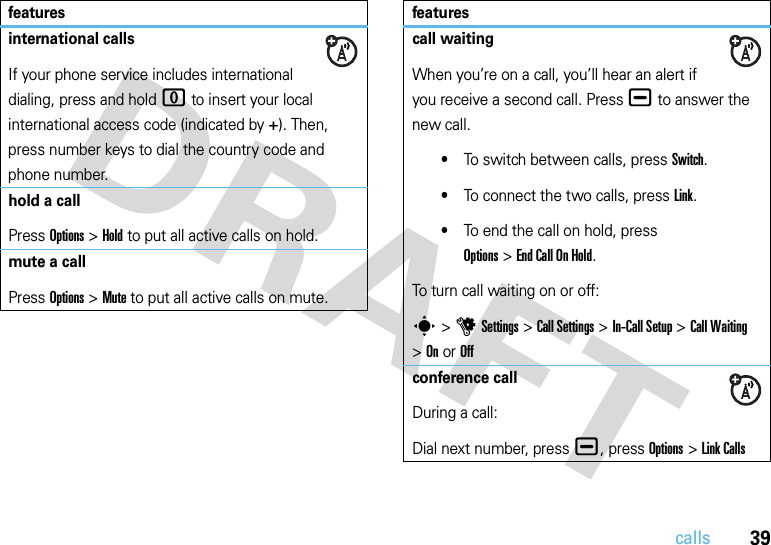
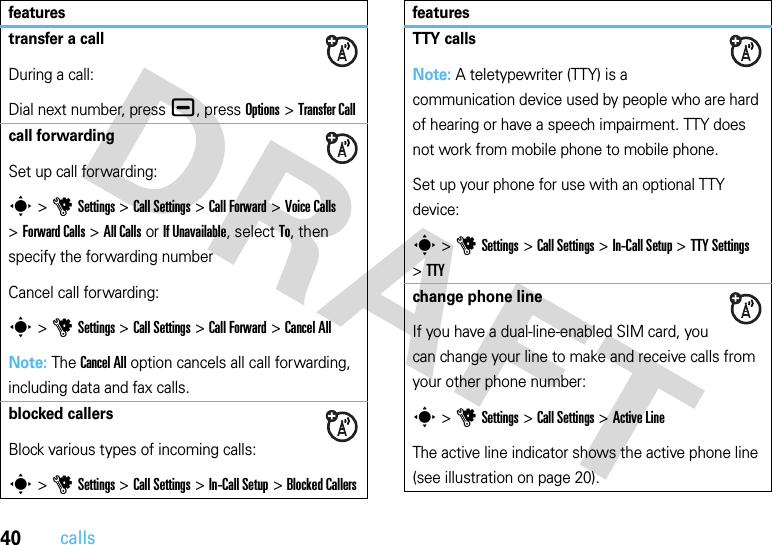


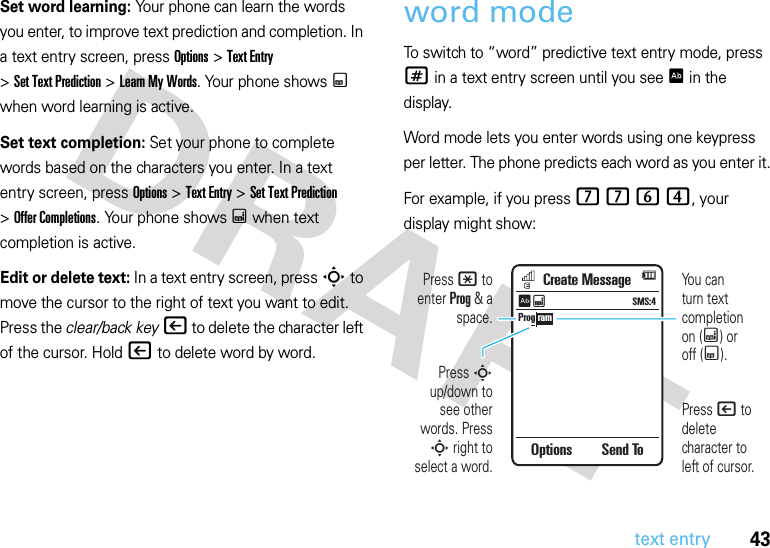
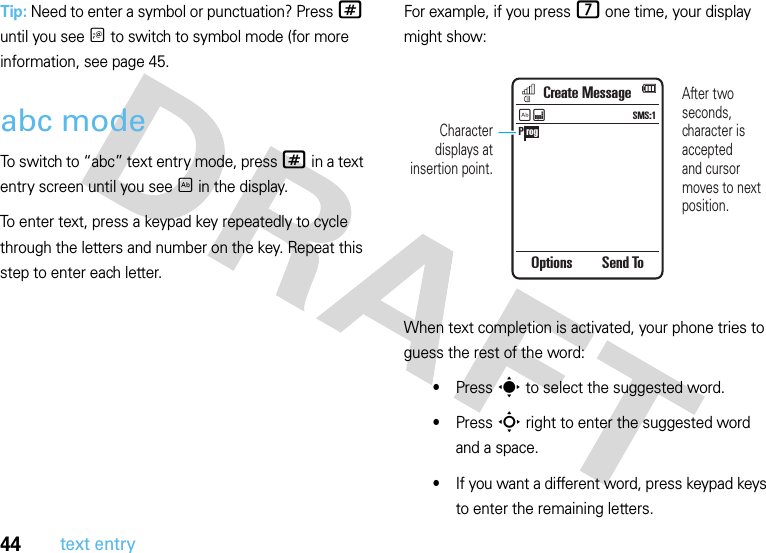



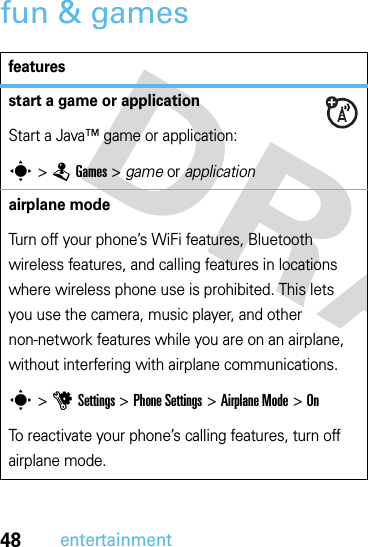

![50messagesand the file. (Note: File size restrictions may apply to pictures and videos sent in a message.)To insert another page, press Options >Insert >Page. You can enter more text and objects on the new page.2When you finish the message, press Options >Sending Options to set message options (such as Subject and Priority).3When you finish setting message options, press Done.4Press Send To to select message recipients. You can:•Select one or more entries from your contact list (press S to scroll to an entry, and press s to select it).•Enter a new number or email address (press Options >Enter Number or Enter Email).5Press Send to send the message.Your phone might tell you that this is a multimedia message if it contains multiple pages or media objects. Some phones or networks don’t support multimedia messages. Press Yes to send the message.To save or cancel the message, press Options >Save to Drafts or Cancel Message.Messages that you send are stored in the Outbox. Icons next to each message show if the message was sentñ, if the send attempt was successful™, or if the send attempt failed~. Press Options to perform various operations on a message.receive a messageWhen you receive a text message, your phone plays an alert and shows New Message. The text message indicator] appears at the top of the home screen.](https://usermanual.wiki/Motorola-Mobility/P56JK1/User-Guide-1013442-Page-52.png)
![51messagesTo read the message, press View. If the message contains media objects:•Pictures and animations show as you read the message.•Sound files play as you read the message. Press the volume keys on the side of your phone to change the sound volume.•Attached files are added to the end of the message. To open an attachment, select the file indicator or file name.To answer the message, press Options >Reply.instant messagingUse instant messaging to share messages with your friends in real time.Find it: s >aIM, scroll to your IM account, press Log InIf you don’t have an IM account, select [New Account] to create one.To find others online, select Contact List to see a list of other users.To start a conversation, scroll to a name in the Online Contacts list and press Send IM.To open an active conversation, scroll to a name in the Conversations list and press View.To end a conversation, press Options >End Conversation.To log out from your instant messaging session, press Options >Log Out.](https://usermanual.wiki/Motorola-Mobility/P56JK1/User-Guide-1013442-Page-53.png)
![52messagescreate or edit an IM accountTo create a new IM account:Find it: s >aIM >[New Account]To edit an existing IM account:Find it: s >aIM, scroll to an account, press Options>Edit Accountmore message featuresfeaturessend a prewritten quick notes >gMessaging >Messages >Templates >Text Templates > quick note, press Options>SendTo create a new quick note:s >gMessaging >Messages >Templates >Text Templates, press Options>Create Templateset up an email accountYou can set up and use multiple email accounts on your phone:s >gMessaging >EmailIf no account exists, the phone prompts you to set up a new email account.Your phone shows a separate folder for each email account.send emails >gMessaging >Emailuse a multimedia templateOpen a multimedia template with pre-installed media:s >gMessaging >Messages >Templates >MMS Templatesfeatures](https://usermanual.wiki/Motorola-Mobility/P56JK1/User-Guide-1013442-Page-54.png)
![53messagesread new message or emailWhen your display shows New Message, press View.read old messagess >gMessaging >Messages >ConversationsIcons next to each message show if it is read>, unread], urgent<, or has an attachment*. Press Options to perform various operations on a message.read old emails >gMessaging >Email > email folderPress Options to perform various operations on a message.featuresstore message objectsGo to a multimedia message page, then press Options>Store.create folderCreate a personal folder to store your messages.s >gMessaging >Messages >My Folders, press Options >Create Folderbrowser messagesRead messages received by your browser:When your display shows New Message, press View.To activate browser messages and adjust browser message settings:s >gMessaging, press Options >Message Settings >Browser Messagesfeatures](https://usermanual.wiki/Motorola-Mobility/P56JK1/User-Guide-1013442-Page-55.png)








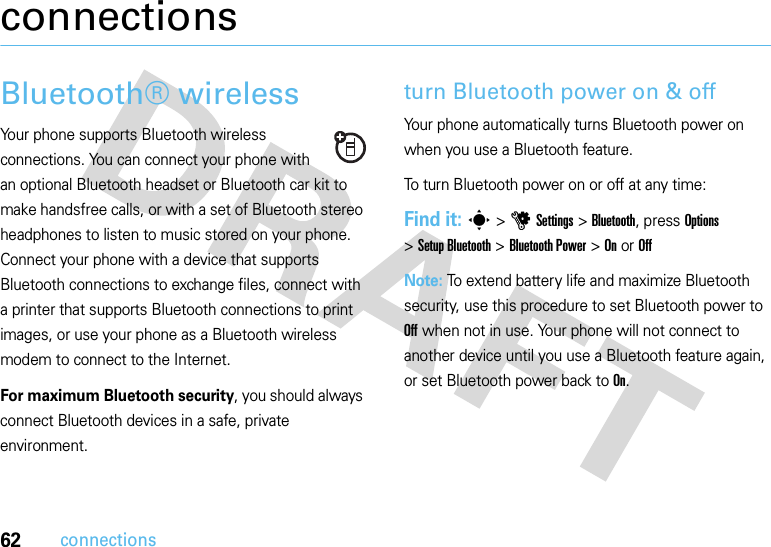
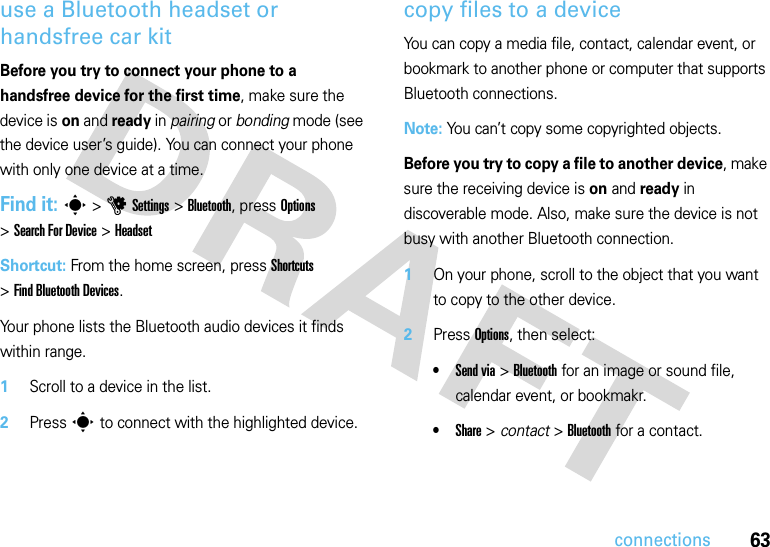
![64connections3Select a recognized device name.orSelect [Search For Devices] to search for new devices, then select the device where you want to copy the object.4Press Options >Send.5If necessary, enter a mutually agreed upon passkey (such as 0000) on your phone and the device, then press OK to connect to the device.Your phone shows Sending while the file is transferred. When file transfer is complete, the phone shows Send Successful, and prompts you to press OK to continue.receive files from a deviceBefore you try to receive a file from another device, make sure your phone’s Bluetooth power is on (see page 62).Place your phone within range (approximately 10 meters/30 feet) of the other Bluetooth device, and send the file from the device.If your phone and the sending device were not previously paired, place your phone in discoverable mode so the sending device can locate it. Press s>uSettings >Bluetooth, press Options >Discoverable On 3 Minutes. The Bluetooth indicator & in the home screen flashes when your phone is in discoverable mode.Your phone shows Incoming Transfer while the file is transferred. When file transfer is complete, the phone shows Successful, and tells you where the file was stored.](https://usermanual.wiki/Motorola-Mobility/P56JK1/User-Guide-1013442-Page-66.png)
